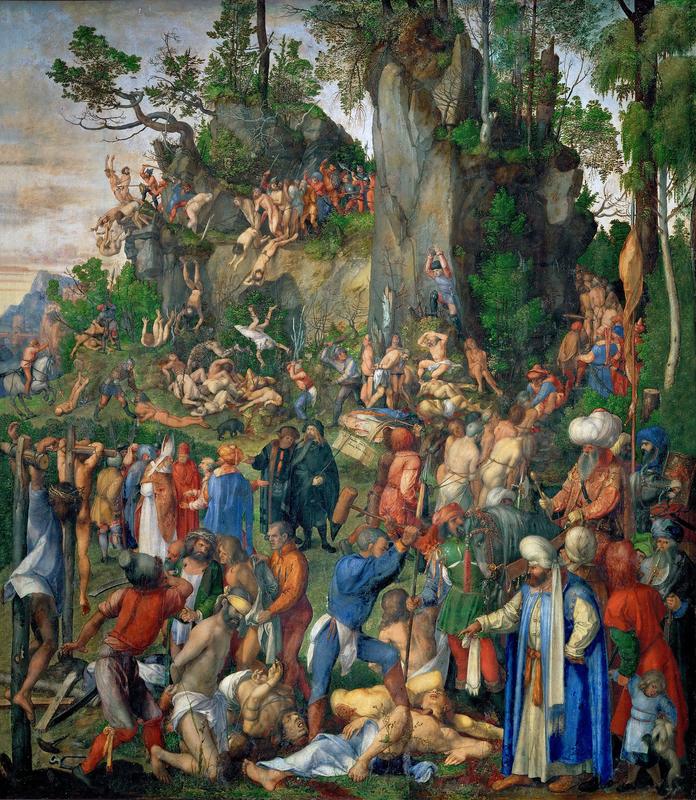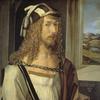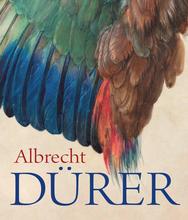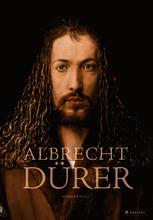More about Martyrdom of Ten Thousand Christians
- All
- Info
- Shop

Sr. Contributor
Martyrdom of the Ten Thousand needed a big do-over that barely turned a profit.
Martyrdom tells the story of 10,000 soldiers who convert to Christianity and how it royally pisses everyone off. Rome's Emperor Hadrian is leading his troops to quell an uprising. Typical day in the life of a late Roman emperor. The rebels start winning until his last 9,000 soldiers see a vision of angels. They convert to Christianity and win. Hadrian wants to throw them a party, but they refuse. Only party they want to go to has Christ at its heart, not Hadrian's stupid pagan idols. So, Hadrian orders some vassals to get to avenging his honor.
The vassals trap the 9,000 Christians on Mt. Ararat (where Noah's ark makes landfall) and throw rocks at them. God swipes away the puny rocks off his new best friends, and another 1,000 join their ranks. A Persian king comes to the scene and makes a back-room deal with Hadrian for some contested land in exchange for taking care of his problem. An accord made, the Persian king proceeds to crucify and behead every last one of these newly made Christians. And everyone lived happily ever after.
This Martyrdom was Dürer's second go at the subject. His first was a 'meh' woodblock that emphasized the brutality of the story, putting, for example, a bishop getting his eye gouged out front and center. More snuff painting than historical epic. So Frederick the Wise, Elector of Saxony, came calling and told Dürer to try again and do better. Frederick was a huge fanboy to the 10,000 martyrs, and he wasn't going to accept anything subpar. He even had a few of their bits in his relic collection. And when I type "relic collection," it's not a joke. Frederick had more than 5,000 body parts from purported saints amassed in his personal chapel. One was supposed to be a beard hair from Christ. He showed off his body parts collection once a year until his good buddy Martin Luther decided that relics were for Catholics, not Protestants.
Dürer worked on Martyrdom for a full year, and barely paid expenses with his fee. Among all the murder in the piece is a hint of good old-fashioned racial fear mongering. The pimped out guy in the blue coat and a turban is supposed to be Persian, but he'd look like a stereotypical Turk to Dürer's contemporaries. The Turks had taken Constantinople just 50-years before Dürer painted this Martyrs, and everyone in power was saying that Germany was next (which it never was). Dürer himself makes a cameo in the middle of the painting, dressed all in black. Speaking with him is Konrad, a famous German poet and Dürer's bestie. Konrad had died a while before Dürer painted Martyrdom, and it seems like the painter just wanted to talk with his friend one last time, like Vin Diesel and Paul Walker (RIP) at the end of Fast & Furious 7.

Contributor
People were so hot and cold with Christianity back in the day. Legend has it that a whopping ten thousand Roman soldiers, recent converts, were tortured and killed by the Persian army.
The most messed up part? The orders came from the Romans themselves. Eventually the Roman emperor himself converted to Christianity, so then being Christian was suddenly OK. But that change of heart came too late for the ten thousand martyrs.
Durer first made a woodcut version of the scene. It has the bishop lying on the floor as his eyes are being drilled out. Durer actually toned down the violence for this painting. Maybe because the great artist put himself and one of his best friends in the middle of the scene. Dressed in black, they are wandering about aimlessly.
In the lower-right corner, the second-in-command Persian (in the blue robe) appears to be in charge of deciding who gets clubbed, who gets beheaded, and who gets crucified. He also seems to think it is bring your son to work day. The son thinks it is bring your dog to your dad's work day. Unfortunately, neither son nor dog seem too interested in the slaughter. Kids are so jaded these days.
The deathfest is said to have taken place on Mount Ararat in Turkey, which also happens to be the place where Noah's ark supposedly ran aground after the flood.
--
Albrecht: "Dearest Hans, let us wander about aimlessly and discuss the meaning of life."
Konrad: "What's to discuss, we are Christians in 1508, so we already know the meaning of life. It's all laid out in the bible, and questioning any of it can be dangerous. Different topic please!"
"You are right. I don't know what I was thinking. Let's talk about my hair again. I am seriously thinking about another perm for my next self portrait."
"Well you do have awesome hair, and your skill at self-portraiture is legendary."
"I do what I can. One day musicians will unite in groups of four, and they will play their lutes extra loud, and they will copy my hair, and they will be called hair bands. Get it? Hair Bands, ha ha ha!"
Featured Content
Here is what Wikipedia says about Martyrdom of the Ten Thousand
The Martyrdom of the Ten Thousand is an oil painting by Albrecht Dürer, dating to 1508 and now at the Kunsthistorisches Museum of Vienna, Austria. It is signed on a cartouche which hangs from the artist's self-portrait in the center, saying Iste faciebat Ano Domini 1508 Albertus Dürer Aleman.
Check out the full Wikipedia article about Martyrdom of the Ten Thousand















